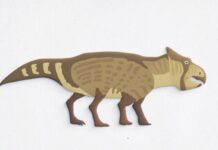ROYAL BC Museum Curator of Invertebrates Melissa Frey is happy as a clam about her latest discovery.
Thanks to a sharp eye and a specimen found within in the Royal BC Museum’s collection, Frey has discovered a new species of clam which lives deep off the coast of Vancouver Island.
“When I first saw the specimen, I suspected it was special – turned out there appeared to be no similar species from this coast in the existing taxonomic literature, suggesting that indeed this species was new to science,” Frey said.
The clam, collected by Fisheries and Oceans Canada at about 1,000 metres depth off of Quatsino Sound in 2004, is now a one-of-a-kind find.
The first telltale sign that the clam is unique is in its shell, which has unusual scalloping, or curved projections, on an edge.
Further unique traits not so plain to the naked eye were also identified by Dr Graham Oliver, a bivalve expert at the National Museum of Wales, who, with Frey, co-authored a recent article in the journal Zootaxa announcing the new species.
The species’ scientific name, Ascetoaxinus quatsinoensis, is a tribute to both its curious shape and its home.
The discovery of a new species of marine invertebrate is rare; Frey estimates it occurs about twice per year for British Columbia ecosystems.
The other real significance of the find is as an example of the importance of museum collections.
Worldwide, millions of specimens are collected and deposited into museums for long-term, safe storage. From there, experts have the opportunity to borrow and study the samples for scientific research.
Worldwide, the process to identify stored specimens can take years, or even decades, due to the large volume of materials collected and the limited number of experts. But it’s worth the wait.
“Resulting discoveries highlight why our natural history collections are so valuable. Sometimes people question the purpose of keeping preserved animals,” Frey said. “But hidden within our collections are opportunities for discovery: new records, new attributes – even new species. Ultimately, these collections allow us to better understand and steward the spectacular diversity living within the ocean.”
Now, the only sample in the world of this new species of clam is now taking its place among the thousands of specimens at the Royal BC Museum, adding to the collective knowledge of our coastal waters.















